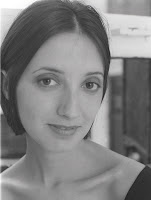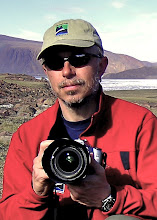How many factual filmmakers have fallen under the spell of Robert Mckee, prolific screenwriting workshop guru and author of Story: Substance, Structure, Style and The Principles of Screenwriting?
In his book and workshops, Mckee deconstructs many of Hollywood's most famous films and shows how most follow a similar structure, what is known in the industry as "high concept." Basically, the protagonist runs through a series of increasingly difficult conflicts until he or she finally prevails and the film ends.
This structure works beautifully for fictional films, but real life rarely plays out in such neat little story lines. And yet many many factual filmmakers have succumbed to his ideas and drive themselves crazy trying to fit their films into his structure. Enter Fernanda Rossi, who calls herself the Doc Doctor. I recently attended a weekend workshop with Fernanda and was quite impressed. She's obviously spent a great deal of time watching and thinking about documentaries and has come up with a structure theory far more suitable for factual films.
Enter Fernanda Rossi, who calls herself the Doc Doctor. I recently attended a weekend workshop with Fernanda and was quite impressed. She's obviously spent a great deal of time watching and thinking about documentaries and has come up with a structure theory far more suitable for factual films.
It's hard for me to do her theories justice here, and I encourage you to take one of her workshops, but basically she says factual films fall within a spectrum. A few mimic the high concept films of Hollywood, and on the other end there are films that work through the information with no dramatic arc. What's most interesting is that in the middle there are lots of excellent documentary films that have dramatic arcs to keep audiences on the edge of their seats, but no escalating conflict. Instead, the protagonist faces a series of increasingly difficult obstacles (these can be physical or mental) before the conclusion of the film.
No longer feeling the pressure of searching for conflict (or trying to generate it) in my films has freed me to think more about how to portray real life in a dramatic and accurate way.
You can visit Fernanda's web site here: The Doc Doctor.
And check out her book on creating great trailers, Trailer Mechanics, which will show you how to create better film trailers and therefore raise more money for your next film. She's currently writing a book on documentary structure. Hurry up Fernanda we all want to read your new book.
Friday, January 18, 2008
Seduced by Fernanda Rossi
Posted by
Gino Del Guercio
at
9:18 AM
0
comments
![]()
Labels: documentary, fernanda rossi, robert mckee
Tuesday, December 18, 2007
Ross McElwee--test, test, test
Recently I've been reading Liz Stubbs' book Documentary Filmmakers Speak, which is excellent by the way. It's a collection of interviews with factual filmmakers, including Ross McElwee, which I read last night. McElwee makes interesting and funny personal documentaries, the most famous of which is Sherman's March, about his search for love in the South. (Talk about bizarre people.)
In the interview he talks about his process, and I was struck by the amount of audience testing he does. I think this is something for everyone making factual films to keep in mind. He says he's assembled a group of friends and filmmakers in the Boston area, where he lives. Once he has finished his first rough cut he begins showing his work to this group and keeps bringing it back to them as he progresses. He says he knows he's finished when he's happy with the reaction of this group.
McElwee says he also holds different types of screenings. Sometimes before a small group of people, which he says is like sitting in the back of a theater. From these he gets a general sense of what's working and what's not. At other times, he'll show it to one person at a time in the screening room, where he can get a more specific idea of why some scenes work and others don't.
All good filmmakers screen their films to some degree, and maybe I'm reading too much into this, but McElwee seems to have assembled a specific group of people he trusts and goes through the process in a precise and thoughtful way. When making films, many of us are reluctant to show our work to anyone before we think it's ready. I think purposely and methodically getting audience reactions throughout the process is something we should all take more seriously.
Posted by
Gino Del Guercio
at
8:45 AM
0
comments
![]()
Labels: Charleen, documentary, Ross McElwee, Sherman's March, Six O'Clock News, Time Indefinite
Friday, November 23, 2007
"The best creative decision I ever made."
Sometimes things just go right.
For Robert Stone that moment came when he was directing his first documentary, Radio Bikini, which is about the US military tests of the Hydrogen bomb on the tiny Pacific atoll of Bikini in 1946.
While interviewing Stone for my new book, he told me the following story:
He was conducting his first interview for this first film--with a sailor named John Smitherman, who was present during the tests and had been ordered, along with many other sailors, to clean the radiation off the ships after the bombs had been detonated. They were given no protective clothing.
More than 30 years later, Smitherman was dying from radiation poisoning. Stone made the bold decision to film the sailor in extreme closeup for the entire interview. Smitherman was grotesquely deformed by the radiation. He had lost three of his four limbs, and his last leg was swollen to three times its size. Only his face looked normal, and that's what Stone chose to focus on, to the exclusion of all else.
Smitherman, not realizing the audience could not see the rest of his body, told his dramatic story without ever referring to his deformities, assuming they spoke for themselves. Only during his last question, did Stone ask his cameraman to zoom out very slowly so the audience would finally see what had become of Smitherman.
Stone spent a decade working on the film, shooting many other sailors. But the final cut includes interviews with only two people--the chief of the island and Smitherman.
He first screened Radio Bikini before a small audience at the Edinburgh Film Festival. As the final credits rolled there was silence. Stone assumed the film was a flop. Then one person began clapping, and then another, and then another, until the entire audience was standing. The ending, when viewers finally realize what has happened to Smitherman, is so powerful people are stunned. The film went on to critical acclaim and was nominated for an Academy Award.
Stone has gone on to direct several other excellent documentaries, including one of my favorites Guerrilla: The Taking of Patty Hearst.
Posted by
Gino Del Guercio
at
9:18 PM
1 comments
![]()
Labels: atom bomb, documentary, hydrogen bomb, nuclear war, radio bikini, robert stone
Friday, November 16, 2007
Page One
My name is Gino Del Guercio, and I've been making documentary films for the past 21 years. Some of the documentaries I've worked on that you may have heard of are: Nerds 2.0.1, Red Gold, and Transistorized. I specialize in science, medicine and technology. Most of my work has appeared on either PBS, The Discovery Channel, or A&E.
I'm currently finishing a 90 minute feature called Abandoned in the Arctic. It's about a young man who travels to the high-Arctic (just 450 miles from the North Pole) to find the place where 19 of his great great grandfather's men froze and starved to death during the spring of 1884. His ancestor, Adolphus W. Greely, was eventually promoted to brigadier general, but he never escaped the nick-name "Eat 'Em Alive Greely." More about this later. In the meantime, you can check out the following web site about the expedition and the film www.cocked-hat.com
Recently, I've begun working on a book about other documentary filmmakers who I admire--including Michael Moore, Werner Herzog, and Errol Morris. I'm writing this for people who are interested in the world of documentary filmmaking but don't care about all the technical minutia that goes into making high-end films today. I'll be asking them about why they chose their subjects, where they draw the line between making their films entertaining and keeping them real, what other directors they admire, and how they find great characters. I'll keep this blog updated about my experiences meeting and interviewing these people as I progress.
If you read this, please drop me a line. I'm interested to know what you think.
Gino Del Guercio
Posted by
Gino Del Guercio
at
4:57 AM
6
comments
![]()
